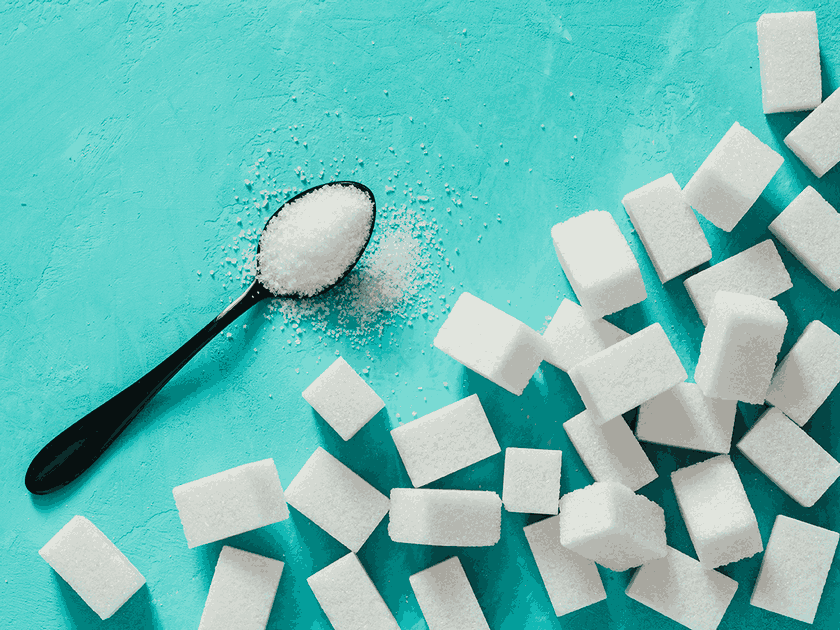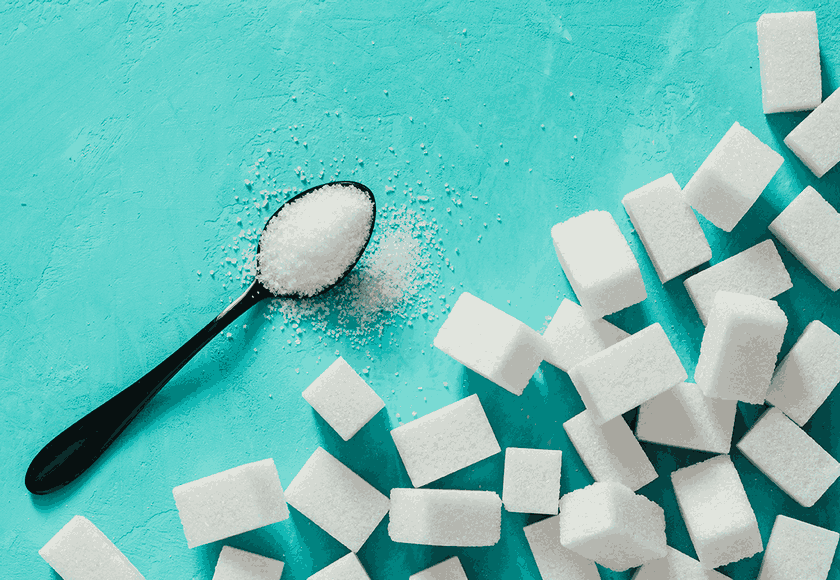Following a no-sugar diet is a trending topic in the nutrition and weight loss space right now, but the concept itself isn’t so new. Although there is no formal diet plan or definition to follow, it typically involves avoiding added sugar while still allowing some natural sugar in your diet. Instead of counting calories, proponents of a no-sugar diet suggest you’ll lose weight by getting rid of added sugar once and for all.
First of all, you need to know what sugar is and why it could potentially be harmful.
Sugar itself does not fulfill any nutritional need and has virtually no nutritional value, which is why sugar is often referred to as empty calories. Although sugar enhances flavor, it can become quite addictive. Sugars include types of carbohydrates that can naturally occur in some foods, but are also an additive in certain foods and drinks. Consuming too much sugar can lead to several health problems and increase your risk for weight gain and diabetes. But that being said, not all sugars are created equal.
The difference between added sugar and natural sugar is important.
Naturally occurring sugars are found in food organically. These include fructose, which is found in fruit and root vegetables, lactose which is found in dairy products, and sucrose which is found in all different types of naturally occurring carbohydrates. Added sugar includes sugar that food manufacturers add to products to increase flavor or extend shelf life. In the Standard American Diet (SAD), top sources of added sugar include soda, fruit drinks, cereals, cookies, cakes, candy, flavored yogurts, and many processed foods.
Getty Images
Added sugars aren’t always so black-and-white, and can often disguise themselves in ingredients lists under names you might not be too familiar with. Some examples include:
- Agave Nectar
- Cane Sugar
- Brown Sugar
- Brown Rice Syrup
- High Fructose Corn Syrup
- Evaporated Cane Juice
- Raw Sugar
- Glucose
- Turbinado Sugar
- Honey
- Palm Sugar
- Molasses
- Beet Sugar
- Maple Syrup
- Sucrose
- Fructose
- Barley Malt Syrup
- Maltodextrin
Getty Images
It’s also important to note how much sugar you’re supposed to have in one day.
The American Heart Association (AHA) recommends a limit of no more than 25 grams (6 teaspoons) added sugar daily for women and no more than 36 grams (9 teaspoons) added sugar daily for men. This may sound like a lot, but to put things into perspective, one Grande Caramel Frappucino at Starbucks has 55 grams of sugar which is over double the amount recommended for women in a day. Just one 12-ounce can of regular soda contains eight teaspoons of sugar and has no nutritional value. The new nutrition facts label now requires companies to list how much added sugar is in their product, which can help you decipher between the amount of natural vs. added sugars in the food. Many people refer to a no-sugar diet as a sugar detox since it involves avoiding added sugar completely. This can be very difficult since the vast majority of packaged foods available have some form of added sugar.
Related Story
20 Best Low-Sugar Foods to Satisfy Every Craving
If you do decide to do a no-sugar diet, it may help you lose weight.
Theoretically, following a no-sugar diet could help you shed pounds because many sugary foods are also high in empty calories. By decreasing your intake of added sugar, you’ll be cutting out a substantial amount of calories and therefore may see a decline in your weight. Choosing more nutritious carbohydrate sources that are filled with fiber, such as fruits and whole grains, can provide nutrition and satiety for a fraction of the calories of those sugary foods.
Here’s how to start a no-sugar diet, if you’re interested in giving it a try.
Take things slow to wean your body off of added sugar and focus on one step at a time. Start by reducing your consumption of one food, such as candy or baked goods. One of the most significant sources of added sugars in the diet comes from sugar-sweetened drinks including soda, specialty coffee drinks, sweetened teas, and fruit juices. If you are drinking away your calories with any of these sugary beverages, that may be a good place to start. Gradually weaning off added sugars can also retrain your taste buds after a few weeks to make you crave less sugar.
The bottom line: Reducing your intake of added sugar is great for your health, but do so gradually and sustainably. If you restrict too much, it may eventually backfire and lead to overeating those forbidden sugary foods. No one knows your body better than you. Some of us work well with an all-or-nothing mentality, while others may benefit from incorporating their favorite sugary foods in moderation on a semi-regular basis. When you do indulge, do so mindfully and sensibly.











